Eastern State Penitentiary: The Troubled Past of the World’s First Prison
Today, the Eastern State Penitentiary is a must-see museum for visitors to Philadelphia. But once upon a time, this historic landmark housed some of the country’s most notorious and violent criminals.
Considered one of the world’s first true penitentiaries, it set the standard for prisons in the United States and the world—and its deteriorating walls still hold plenty of mysteries. Read on to uncover the dark secrets of the past.
A Road Paved By Good Intentions
The Eastern State Penitentiary was modeled on a penitentiary house, built as an extension to Walnut Street Jail in 1790. The function of this house was primarily solitary confinement, which was used as a “time out” area for rebellious convicts.
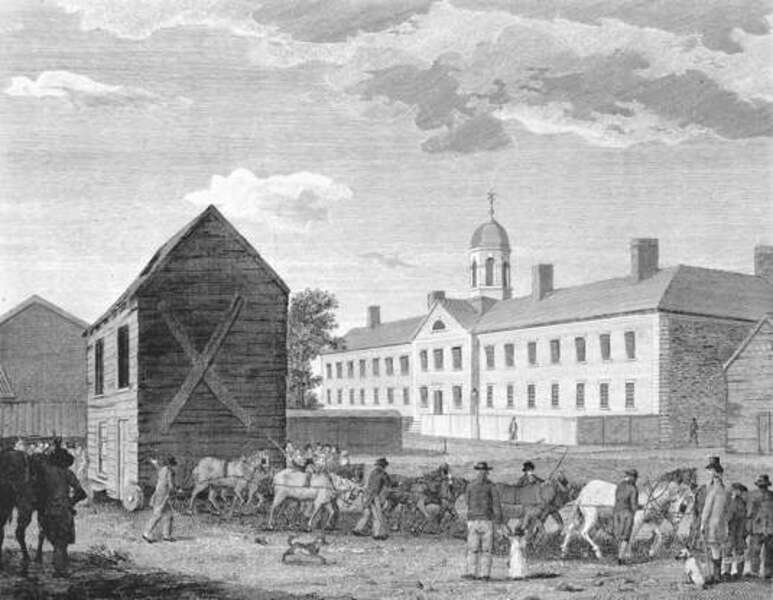
Source: Getty Images
Most prison systems revolved around putting convicts through hard labor. To reform the prison system positively, Quaker thinkers attempted to mix solitary confinement, religious instruction, and skills development to deal with imprisonment more humanely. This, however, did not have the intended effect.
The “Model” Prison
Although the results would be disastrous, the Philadelphia Society for Alleviating the Miseries of Public Prisons, or the Philadelphia Prison Society, had the best intentions. Unfortunately, time would show that solitary confinement is just as bad, if not worse, than hard labor.
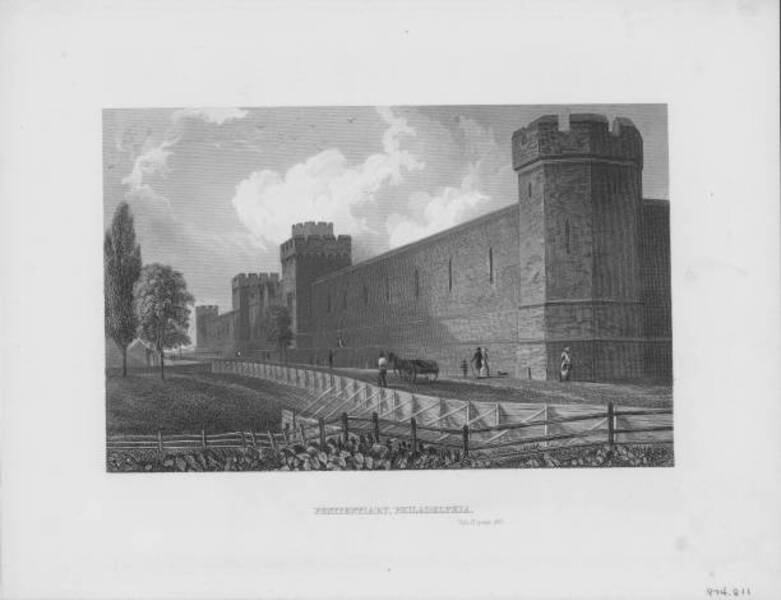
Source: Archive Photos/Getty Images
In those times, solitary confinement was an uncommon practice. However, as well as being considered more humane, storing many people in small, 6-by 8 feet cells was also cheaper. As the first “major” prison in the United States, it would become the model for many other institutions.
The Radical “Pennsylvania System”
Other prisons across the country would be inspired by its design and management system, which came to be known as the “Pennsylvania System.” Based on Quaker notions, the idea was to induct prisoners into developing trade skills to ready them for rehabilitation.

Source: Paul Marotta/Getty Images
Prisoners would also be expected to follow religious tenants to “confront their sinful natures.” Rather than undergoing strenuous physical work while in prison, criminals would be made to reflect on their actions alone in solitary confinement.
The Prototype Penitentiary
The Pennsylvania system came about as the result of necessity, as well as through an attempt at reform. The Walnut Street Jail cells were too large and offered too many chances to socialize with other prisoners through bars and holes in walls—plus, the prison was already overcrowded.
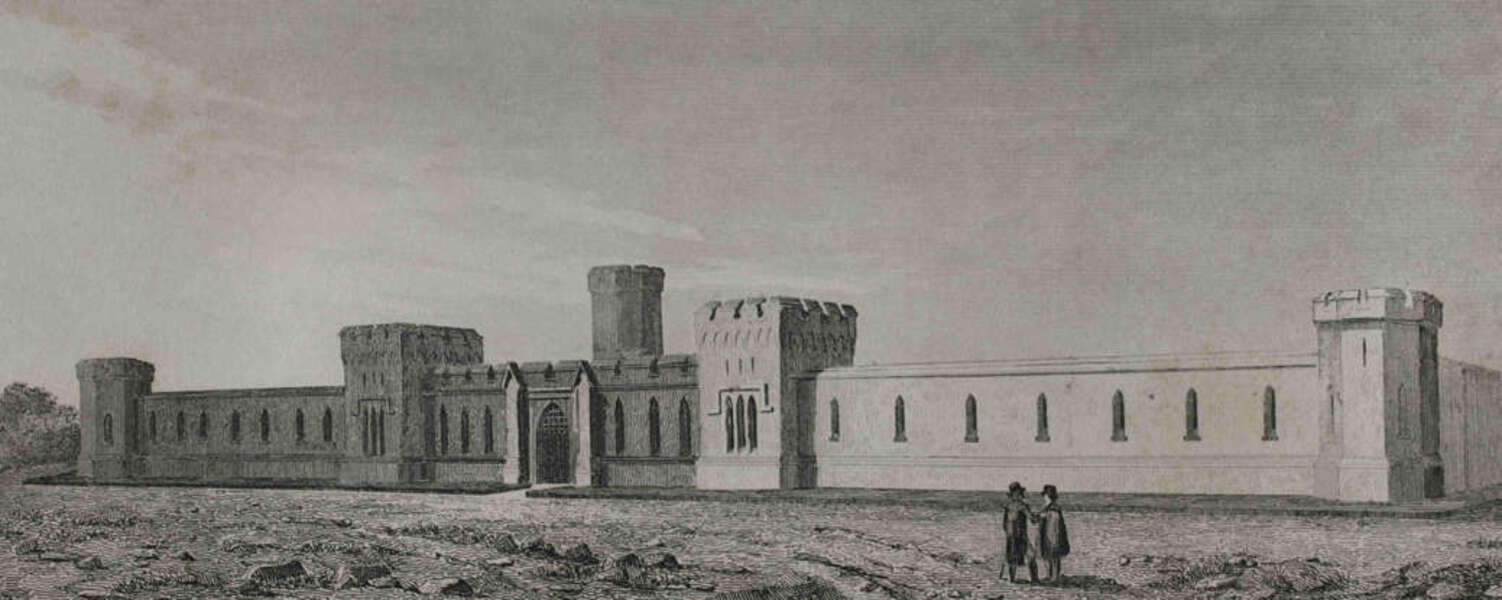
Source: Prisma/Universal Images Group via Getty Images
A new building was constructed with solitary confinement for prisoners in mind, which they called the penitentiary house. This smaller building would later impress state officials and prison reform enthusiasts and go on to form the basis for the Eastern State Penitentiary.
The Most Expensive Building Of Its Day
The Walnut Street Prison’s new addition seemed to solve its overcrowding problem and reduced its surveillance demands as the cherry on top. Convinced that their Pennsylvania model was the key to successful prisoner reform, the government began looking into implementing it elsewhere.
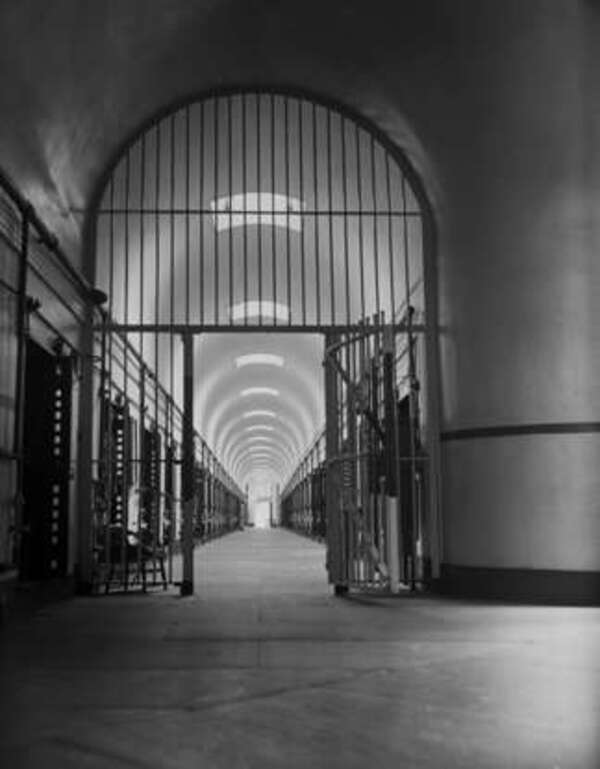
Source: Bettman/Getty Images
On March 22, 1821, plans for a new Eastern State Penitentiary were given the go-ahead. The building would be the most expensive in the United States, with a (then) staggering construction budget of $100,000—but its final cost would turn out to be even higher.
Going Slightly Over Budget
The Eastern State Penitentiary took around 15 years to complete. In 1836, its doors were officially opened, although prisoners had been incarcerated inside the completing wings as they were available. The architects and builders spared no expense in completing this mammoth, state-of-the-art project.
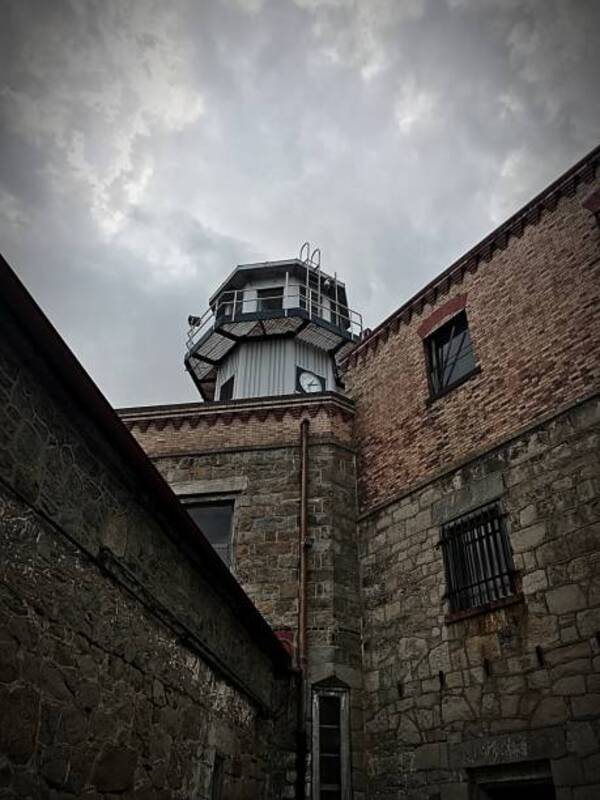
Source: Lisa Boyden/EyeEm/Getty Images
While its original budget was 100,000 dollars, it cost an estimated $780,000 to finish—that’s a staggering seven times more than the planners had originally signed off on. For reference, that kind of money would be worth around $25 million today.
The First Few Guests
Before the Penitentiary was fully finished, several inmates were housed in the finished parts of the building. The first prisoner to have the “honor” of being placed in one of the solitary confinement cells was a black farmer named Charles Williams.

Source: Carol M. Highsmith/Buyenlarge/Getty Images
Charles was arrested for stealing a gold watch and other items. He was sent to the Eastern State Penitentiary in 1829 and served two whole years in solitary—a sentence considered inhumane today—but back then, a common fate shared amongst many who found themselves locked up.
The Radical Radial Layout
When Charles Williams was sent in to be incarcerated, his head was covered by a hood to prevent him from seeing any of the building’s layout. It was a highly innovative design for its time—the building was laid out like the spoke of an eight-sided wheel.
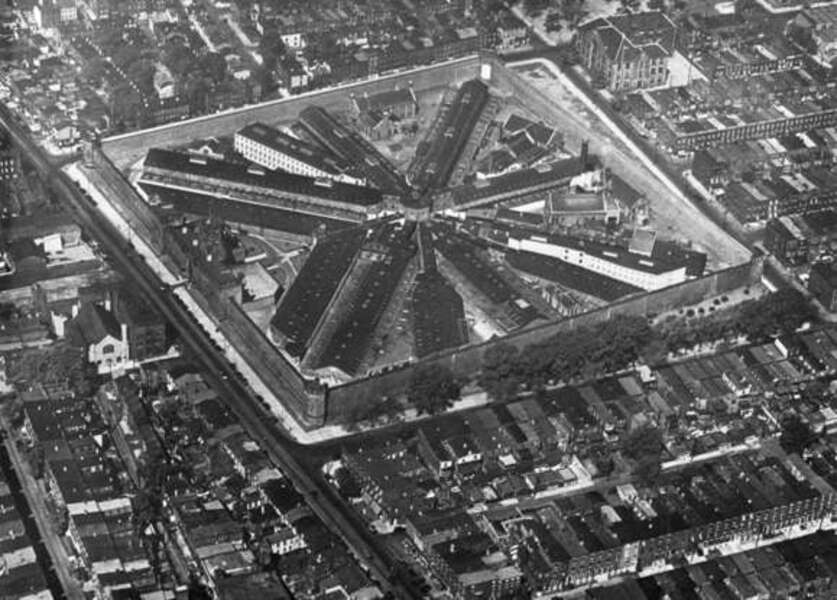
Source: Bettman/Getty Images
The radial layout was designed by the English-born architect John Haviland. Seven of the eight “spokes” contained 76 cells with heavy stone walls 18 inches thick—not just to prevent escape but any communication between each of the cells.
A Day In The Life
An average prisoner would see something like this for the remainder of their sentences: four walls, a 12 by 8 feet floor, a bed, and sparse amenities. The shape of the window would give its occupant just enough light to see but no means to communicate with the outside world.
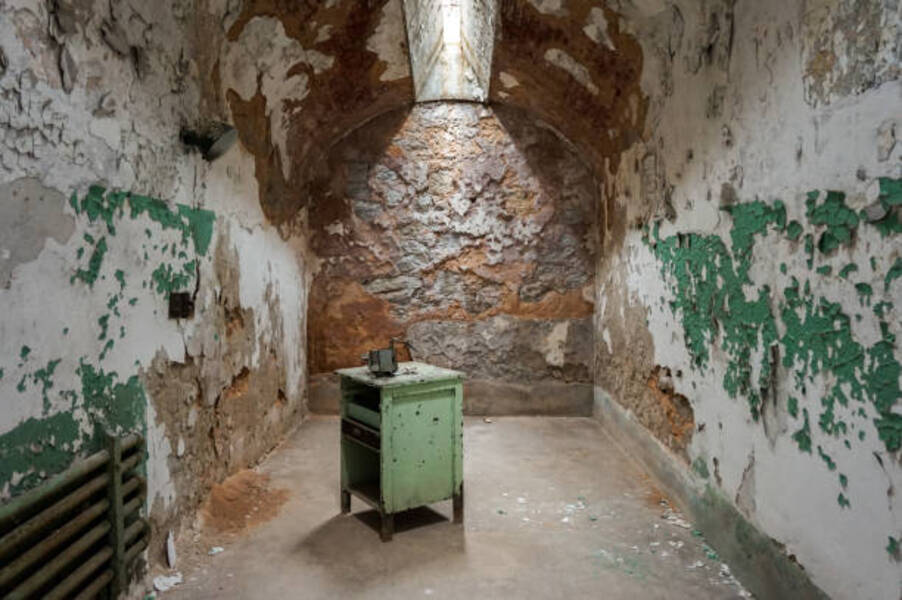
Source: Rohit Rajendran/Getty Images
While hard labor was taken from every prisoner’s schedule, they would still be instructed to work on crafts. They were instructed in carpentry, the making of textile products, and shoe making—at least not when alone in their cells.
Solitary Souls With Solitary Lives
The only time inmates had off between their labors and the strict bounds of their cells was “yard time.” This gave inmates a break outside to exercise—usually about an hour a day—with strictly controlled socialization. Of course, they also had to attend religious services.
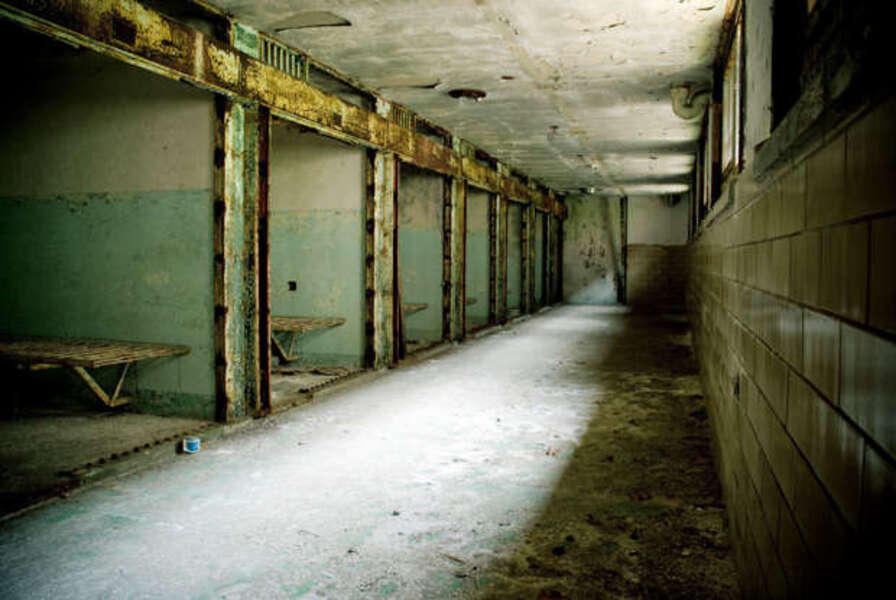
Source: Sam Scholes/Getty Images
However, while most find a connection to their community in religion, this was not the case for the inmates at the Penitentiary. Even if other inmates were in attendance, they would be forced to sit in a way that restricted their sight and prevented communication.
Penance Under A Watchful Eye
The religious themes extended as far as each cell’s construction—from the moment a prisoner was inducted into his cell, he was expected to bow his head low. This was designed to invoke the act of humbling one’s self before the power and judgment of God.
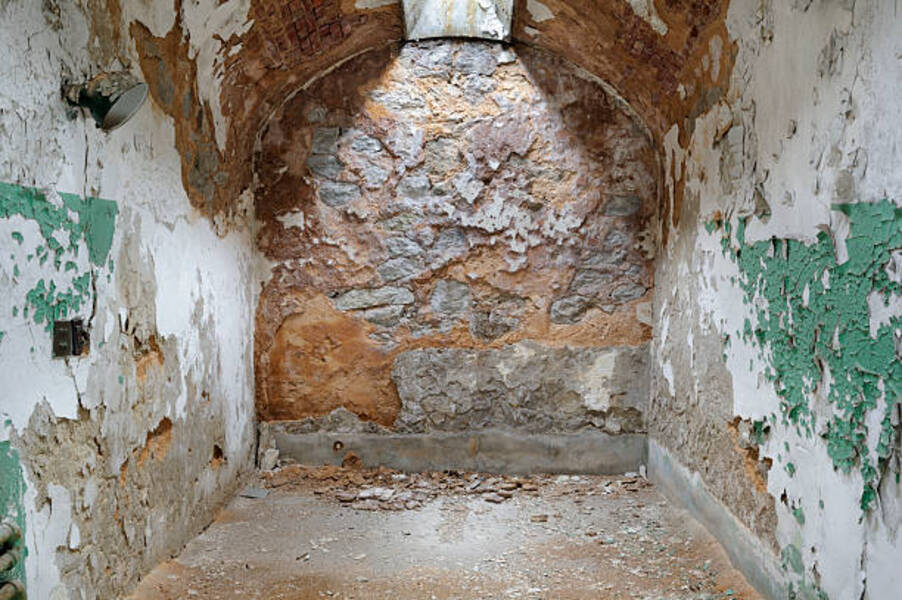
Source: catnap72/Getty Images
The cell’s windows were also designed to maximize “religious inspiration” for each prisoner. It was fashioned to look like an eye—God’s eye—to make anyone under it believe that forces beyond their understanding were watching them.
The Products Of Total Isolation
Inmates would attend mass but would have no idea how many other prisoners were in attendance with them. This is just another example of the extreme lengths the staff went to ensure complete social isolation for each of their “guests.”
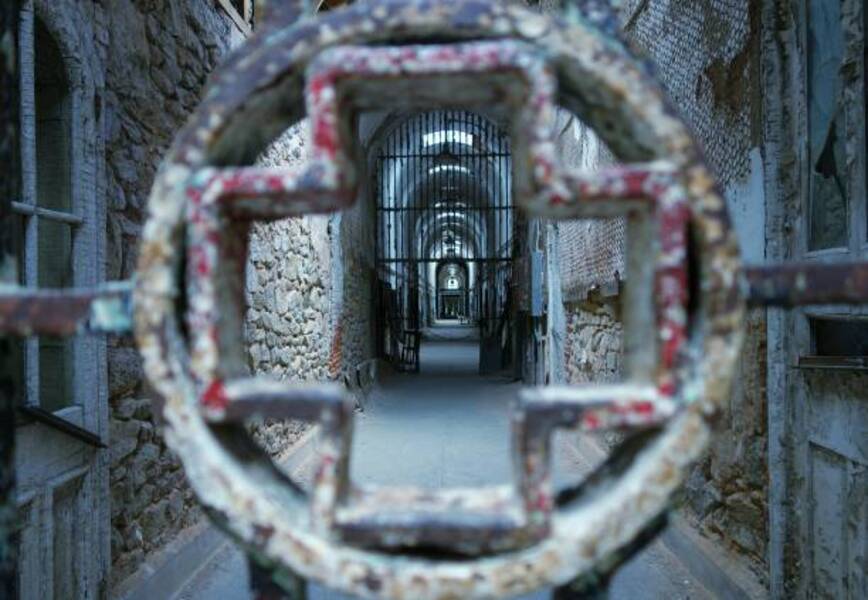
Source: Juha Metsranta/EyeEm/Getty Images
Now armed with extensive research, doctors and psychologists have determined the devastating effects of solitary confinement on the human mind and body. However, back then, the effects of such a practice were obvious, even to the rare visitors who saw it for themselves.
A Dickensian Existence
The Eastern State Penitentiary received a prestigious guest in its heyday. On his tour of the United States, the famed English writer Charles Dickens saw the prison with his own eyes. Not unfamiliar with some of the worst human miseries, he had much to say about the place.
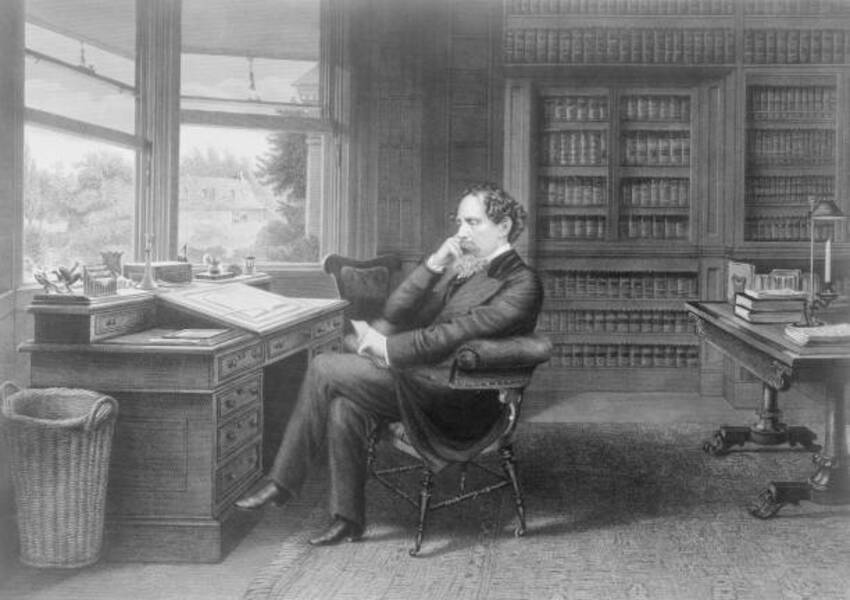
Source: Epics/Getty Images
Dickens wrote, “He sees the prison officers, but with that exception, he never looks upon a human [face] or hears a human voice—he is a man buried alive, to be dug out in the slow round of years, […] dead to everything but […] horrible despair.”
Terrible Punishments
If extended solitary confinement weren’t enough, the prison staff also utilized a slew of mental and physical punishments for those they deemed to have misbehaved. One of these punishments was getting straitjacketed over an extended period.
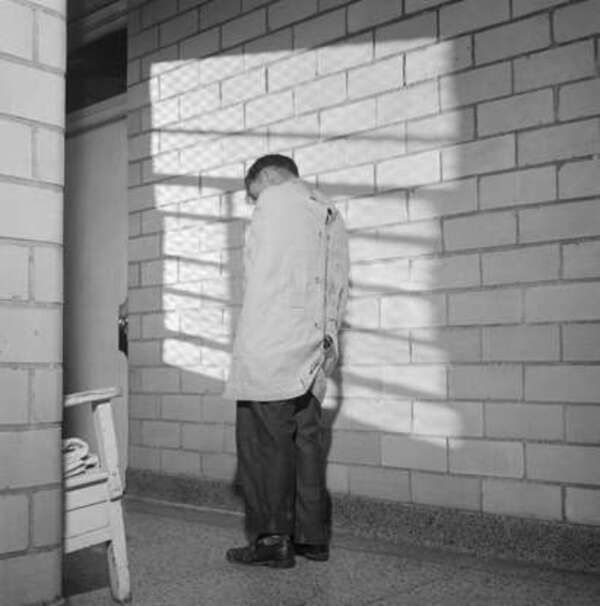
Source: Getty Images
Another more direct punishment was being chained to a chair or wall while guards poured icy cold water over a prisoner’s head. This practice would be seen as barbaric today, but it was regularly dealt out to the inmates in the Penitentiary over the years.
Going Medieval With “The Iron Gag”
A particularly brutal device was fashioned for inmates called the “iron gag.” One part would be inserted into a prisoner’s mouth while the chains were used to tie the prisoner’s hands behind them. As their hands lowered from tiredness, the mouthpiece would gag them.
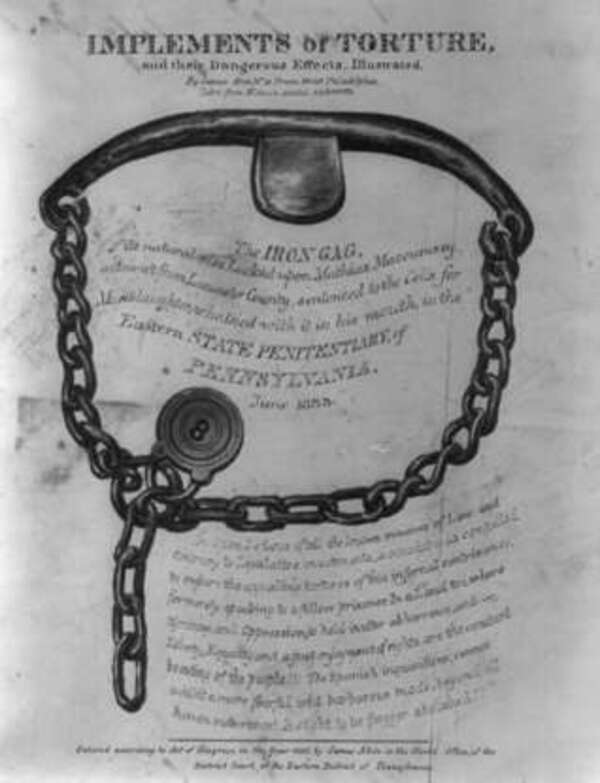
Source: Library of Congress/Public Domain
After one prisoner died with the gag in his mouth in 1833, the Penitentiary was investigated. However, after some light scrutiny, the warden at the time, Samuel R. Wood – and his staff – were acquitted of all accusations by the committee.
Luxury Imprisonment
Not all cells were places of horrible pits of human despair. Very few were well-furnished with luxury items and niceties, including lamps, fine rugs, armchairs, and books. Of course, these cells were reserved for the more affluent inmates.
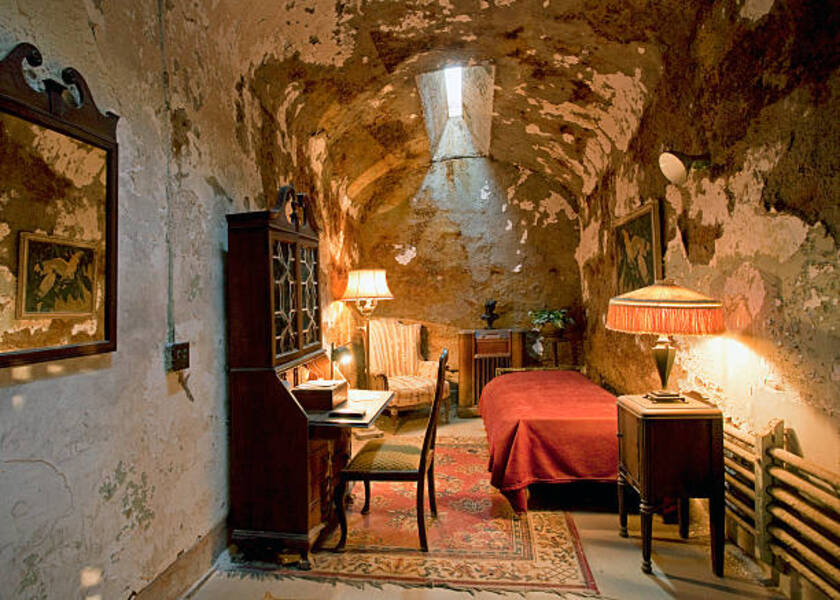
Source: Thom Lang/Getty Images
It’s highly unlikely that the special kind of prisoner inhabiting this cell would have been subjected to the horrible treatment in store for other “lesser” inmates. Any guesses as to who this cell could have belonged to? Here’s a hint—he was one of the big-time mobsters of his day.
The Notorious Mobster
That’s right—the luxury cell belonged to non-other than Al Capone. The notorious prohibition-era gangster managed to get everything he wanted—within reason, of course—smuggled inside the thick walls of the Eastern State Penitentiary.
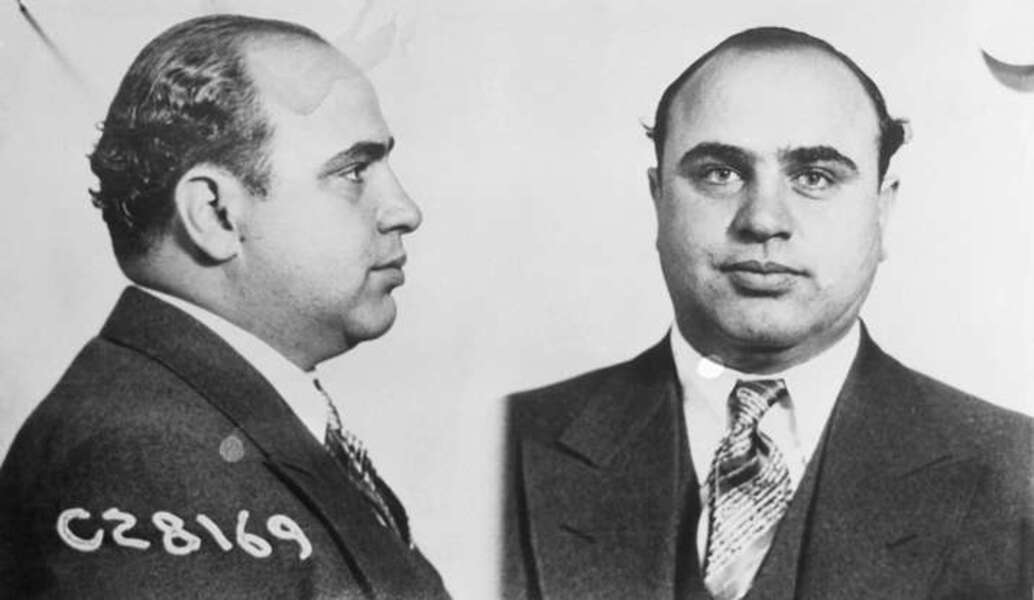
Source: Bettmann/Getty Images
Capone was transferred to the Penitentiary in August 1929. He spent seven months inside, but under hardly punishing conditions – at least compared to the other prisoners. Perhaps the idea was that with all the luxuries he was accustomed to in his cell, he wouldn’t feel the need to escape.
Another High-Profile Guest
Here’s another example of a “celebrity” inmate. “Slick Willie” (or William Francis Sutton) was a notorious bank robber who spent several years in the Eastern State Penitentiary. In 1952, Sutton was caught after a string of bank robberies and sentenced to 30 years in the Penitentiary.

Source: Keystone/Getty Images
While there, he attempted another escape but was caught and spent the remainder of his sentence in complete solitary confinement. While he was known for being slick, he wasn’t slick enough to make it out.
The Ones Who Got Away
Over the years, around 100 escape attempts happened at the Eastern State Penitentiary. Only four successfully escaped. One of the more famous escapees was Leo Callahan, who planned and executed a break-out with five others.

Source: HUM Images/Universal Images Group via Getty Images
The six managed to climb up and over the easternmost wall using a makeshift wooden ladder, presumably constructed during their furniture-making time. Callahan was never recaptured following his escape, but the other five did not get so lucky, as they quickly found themselves imprisoned and punished for their misbehavior.
The Jailhouse Hound
One of the more unusual prisoners in the Penitentiary was a dog named Pep. In August 1924, he was imprisoned for reportedly killing the pet cat of the wife of the Pennsylvania governor, Gifford Pinchot. How a dog was supposed to repent without having any notions of human justice is unclear.
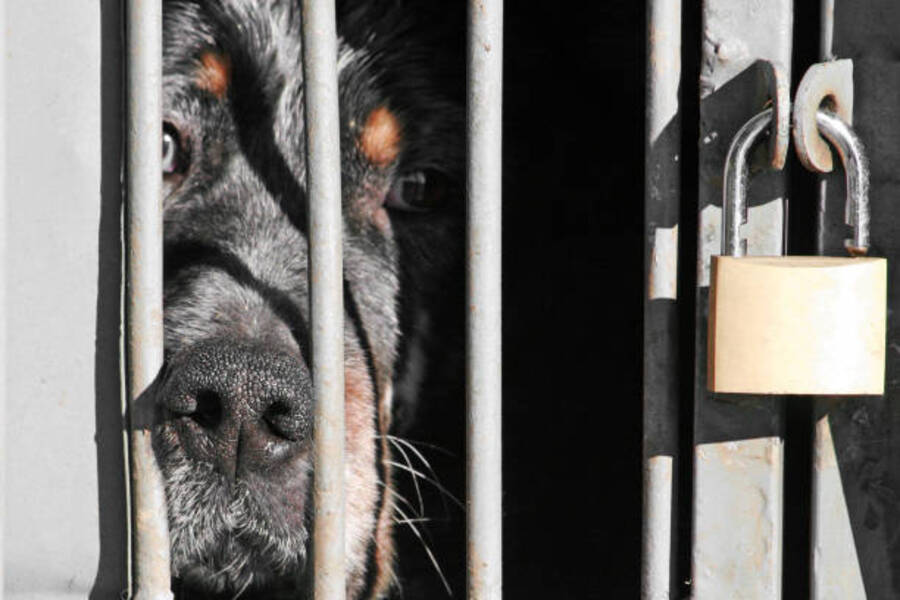
Source: Fernando Trabanco Fotografía/Getty Images
However, the arrest and imprisonment of Pep made international headlines. He spent two human years in the Penitentiary—around 22 in dog years—before being moved to State Correctional Institution—Graterford. There he “served” his sentence without trial until his death.
The Penitentiary Was Overcrowded
In its early years, the Eastern State Penitentiary held an average of 250 prisoners. However, by the 1900s, the number of inmates had skyrocketed to over 1,000. The prison first began putting more people into each cell to accommodate this population surge.
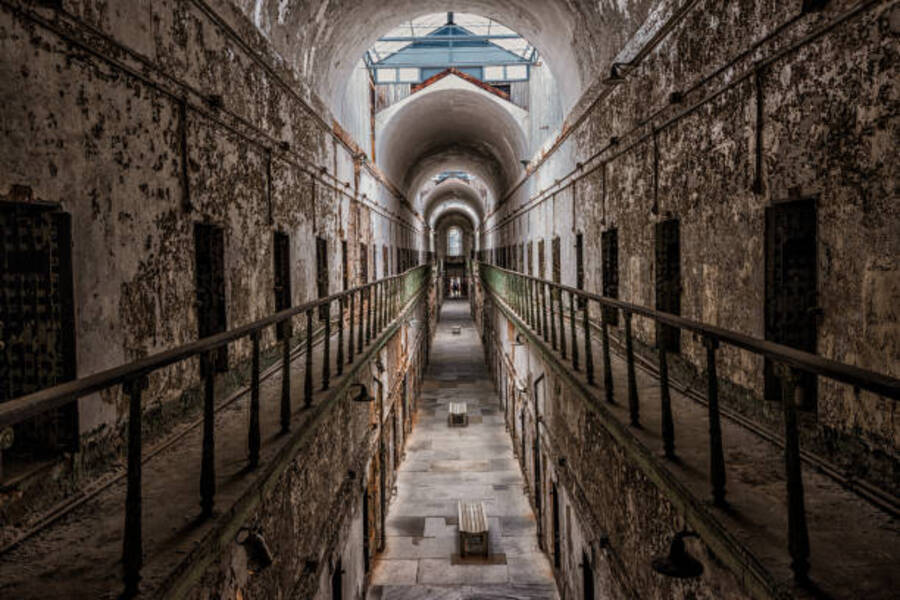
Source: Warren Weinstein/Getty Images
Eventually, underground cells were constructed, known as the “Klondike,” which lacked windows and plumbing. They were designed to be as inhospitable as possible and were used to house some of the prison’s most dangerous inmates. The Klondike cells remained in use right up until the prison’s closure.
Beating The System
Despite the building’s mostly impregnable design—and each prisoner being held in solitary confinement or even straitjacketed—many Eastern State Penitentiary inmates found ways to communicate using handwritten notes passed through the plumbing system.
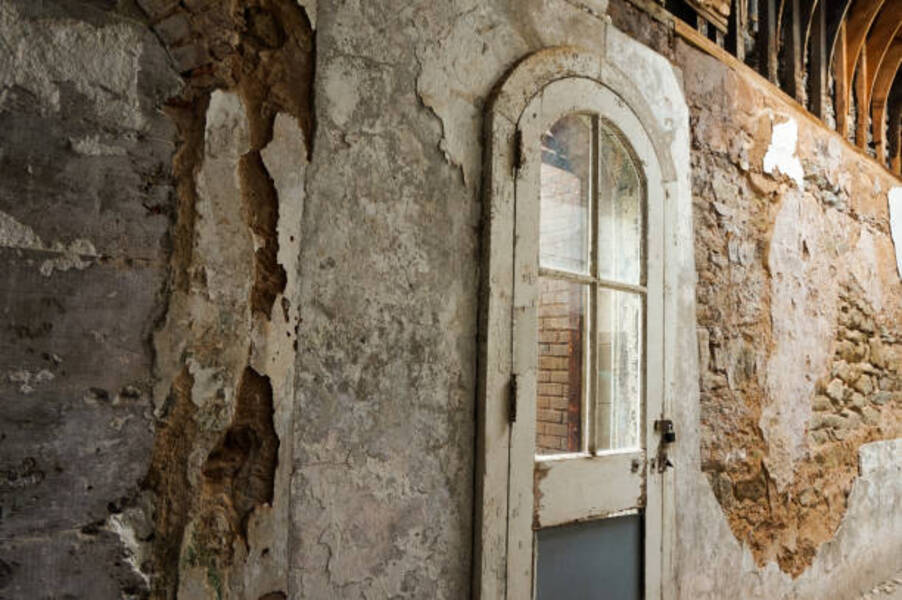
Source: Rohit Rajendran/Getty Images
In addition to being an impressive feat of mass organization, the note system proved effective, allowing prisoners to organize several breakout attempts (although most were unsuccessful) and prisoner revolts over the years, beginning with the first one in the 1840s.
The Great Riot Erupted
In 1933, a riot erupted resulting in several injuries and extensive damage to the prison itself. Following this was the largest riot in the Penitentiary’s history on January 8, 1961, and involved approximately 800 inmates.
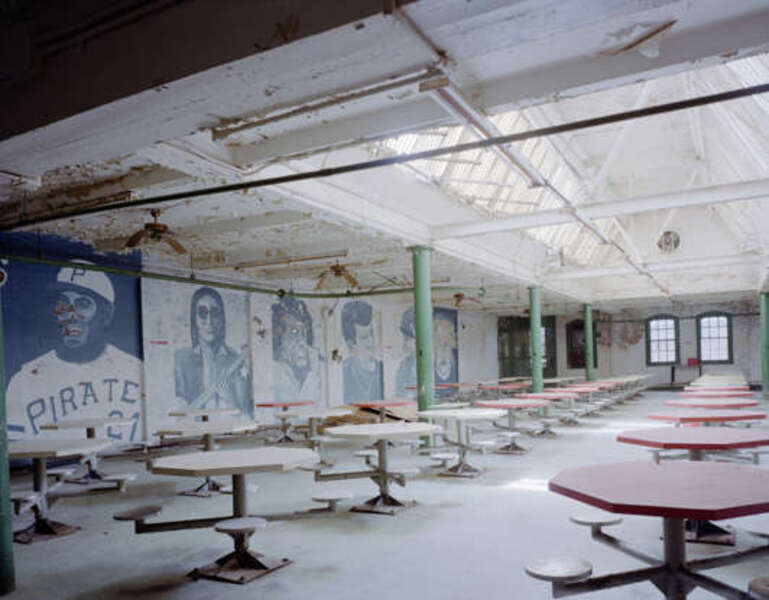
Source: Getty Images
The riot was sparked by complaints about living conditions and treatment within the prison and quickly escalated into a violent confrontation between prisoners and guards. It marked a turning point in the running of the Penitentiary and raised questions about the use of punishment and isolation in correctional reform.
The End Of A Dark Era
In the mid-1950s, the Penitentiary was renamed “the State Correctional Institution—Philadelphia.” It continued to operate until 1950 when it finally released or transferred its last prisoners and closed its doors for good. By this time, it had 134 years of history—much of it dark.
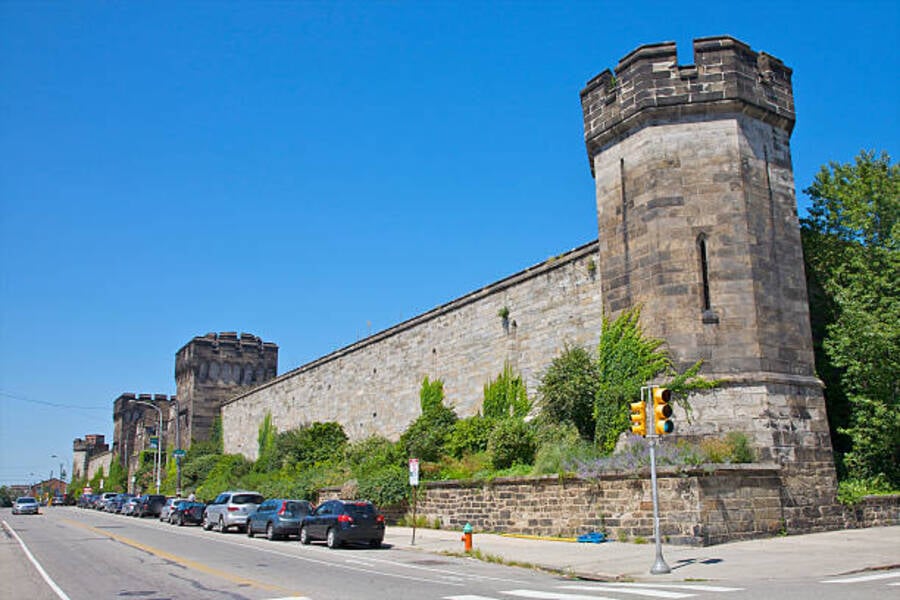
Source: Barry Winiker/Getty Images
For two decades, the complex was abandoned. A small forest grew over its grounds, becoming a haven for stray cats. After so long, it was reclaimed, transformed, and reopened as an educational attraction for anyone who wished to make the trip.
The Penitentiary Museum
While those at the Eastern State Penitentiary were often visited by misery and anguish, today, the prison has a new kind of regular visitor: tourists. While it was always an attractive place to stop by (at least for outsiders), it is now a full-time point of interest for visitors to Philadelphia as a museum.
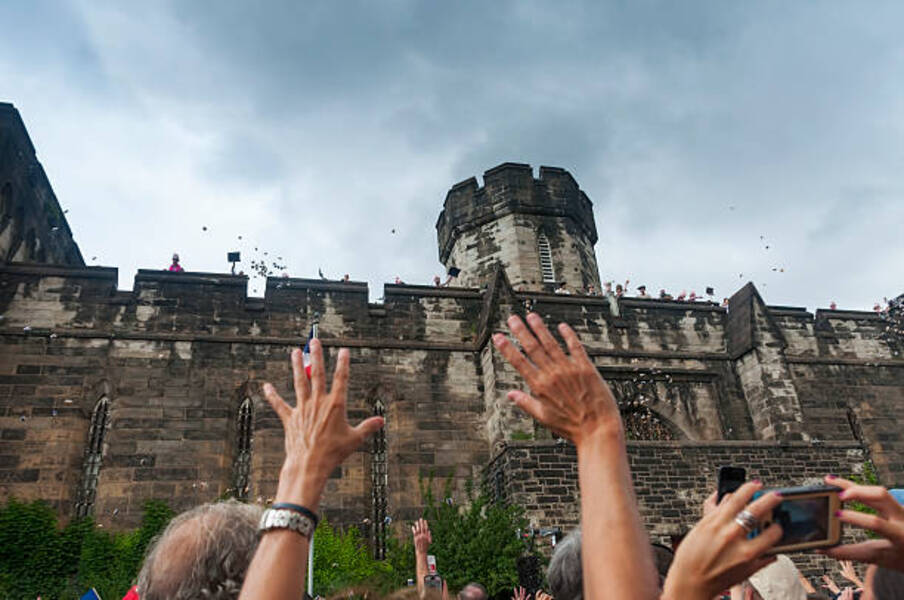
Source: ggustin/Getty Images
It now serves as a popular place to get scared silly on Halloween—or any other day of the year. Due to its size, it could technically be the biggest attraction that Philadelphia has to offer.
